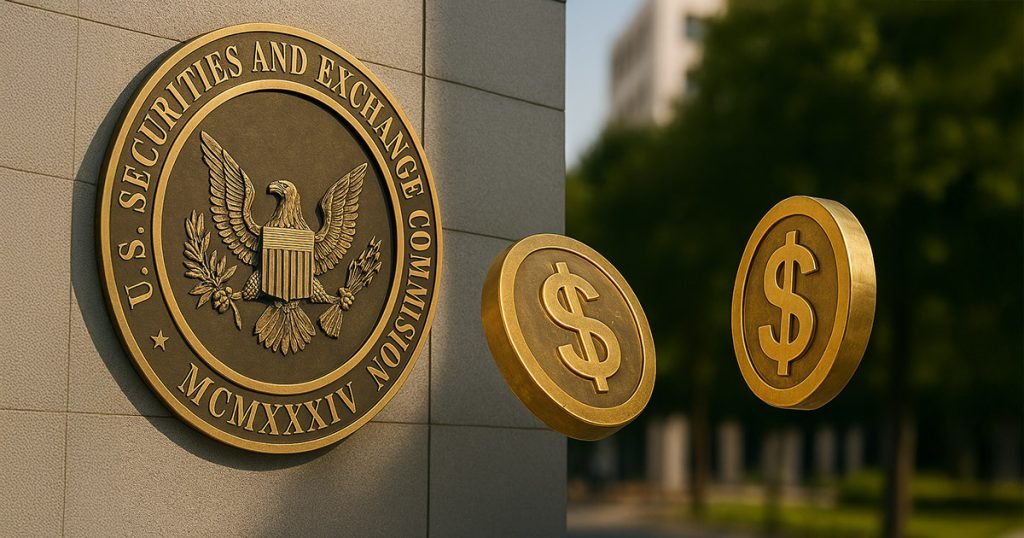Title: SEC Clarifies Regulatory Status of Stablecoins: Reassessing the Definition of Securities in the Crypto Market
In a significant announcement on April 4, 2023, the Securities and Exchange Commission (SEC) provided crucial clarification regarding the classification of certain stablecoins within the framework of U.S. federal law. Specifically, the SEC stated that "Covered Stablecoins"—those backed by cash or cash-equivalent reserves and redeemable for U.S. dollars on a one-to-one basis—are not considered securities. This definitive stance aims to alleviate the regulatory haze that has long surrounded crypto assets, particularly for stablecoin issuers, fintech companies, and cryptocurrency payment processors. By stating that these instruments do not fall under the Securities Act of 1933 or the Securities Exchange Act of 1934, the SEC has made a significant step towards regulatory transparency in the fast-evolving crypto ecosystem.
The SEC further elaborated on what constitutes Covered Stablecoins, emphasizing their design and marketing as not being investment vehicles but rather as functional instruments for payments, value storage, and money transmission. These tokens, often referred to as “digital dollars,” are engineered to maintain price stability without any investment-related benefits such as interest, governance rights, or profit-sharing. This clear delineation underscores the SEC’s commitment to ensuring that tokens serving practical purposes do not fall under the same regulatory scrutiny as speculative investments. Stability, liquidity, and utility are the cornerstones of Covered Stablecoins, highlighting their role in everyday financial transactions rather than in speculative trading.
A key aspect of the SEC’s determination was the application of two landmark tests: the Reves v. Ernst & Young standard and the Howey test. According to the SEC, the Reves test was instrumental in demonstrating that Covered Stablecoins more closely resemble traditional commercial instruments rather than speculative debt securities. The SEC argued that the intent of buyers is primarily transactional rather than investment-oriented. Consequently, Covered Stablecoins are seen as tools for everyday consumer transactions, not investment contracts, as illuminated by the Howey test. This approach offers a new perspective on how federal law interprets the nature of stability and functionality in the cryptocurrency landscape.
To meet the SEC’s criteria, issuers of Covered Stablecoins must adhere strictly to specific requirements. They need to ensure that their tokens are always redeemable for USD at a fixed price and in unlimited quantities. Moreover, a fully backed reserve of cash or liquid, low-risk assets like U.S. Treasury bills must be maintained separately from the issuer’s operational funds to safeguard against any third-party claims. This regulatory framework not only enhances consumer confidence through transparency but also requires issuers to provide proof-of-reserve attestations, thereby ensuring that their reserves are solvent. These operational standards aim to reinforce the credibility of stablecoins as reliable instruments for everyday use in financial transactions.
However, the SEC also focused on the critical aspect of yield and profit generation connected to these tokens. Importantly, holders of Covered Stablecoins do not earn yield or share in the profits realized from the reserve assets held by issuers. While issuers might retain interest earned on reserve funds, this is not distributed to token holders, thereby aligning with the SEC’s interpretation that there is no expectation of profit derived from the token’s ownership or trade. The clarity on this point sharply distinguishes fiat-backed stablecoins designed for utility from those whose primary selling points include return-generating features. As a result, tokens that promise yields or profit-sharing still face potential classification as securities under existing law.
It is also essential to note that the SEC’s statement does not encompass algorithmic or uncollateralized stablecoins, which remain points of contention in regulatory discussions. While Covered Stablecoins now enjoy a clearly defined regulatory status, the future of algorithmic stablecoins is under scrutiny, and further legal and policy considerations are expected. The SEC’s latest announcement lays the groundwork for future regulatory engagements with different types of stablecoins, signifying a willingness to engage with the evolving nature of digital assets.
In summary, the SEC’s declaration on the regulatory status of Covered Stablecoins marks a pivotal moment in the intersection of cryptocurrency and U.S. financial law. By clarifying that stablecoins backed by cash-equivalent reserves do not qualify as securities, the SEC has opened doors for more innovation and stability in the crypto space. As the market for digital finance continues to grow, this framework fosters a more transparent environment that will likely stimulate further developments in fintech and cryptocurrency operations, while also ensuring that investors and users understand the risks and fundamental purposes behind such assets.


